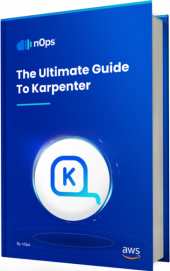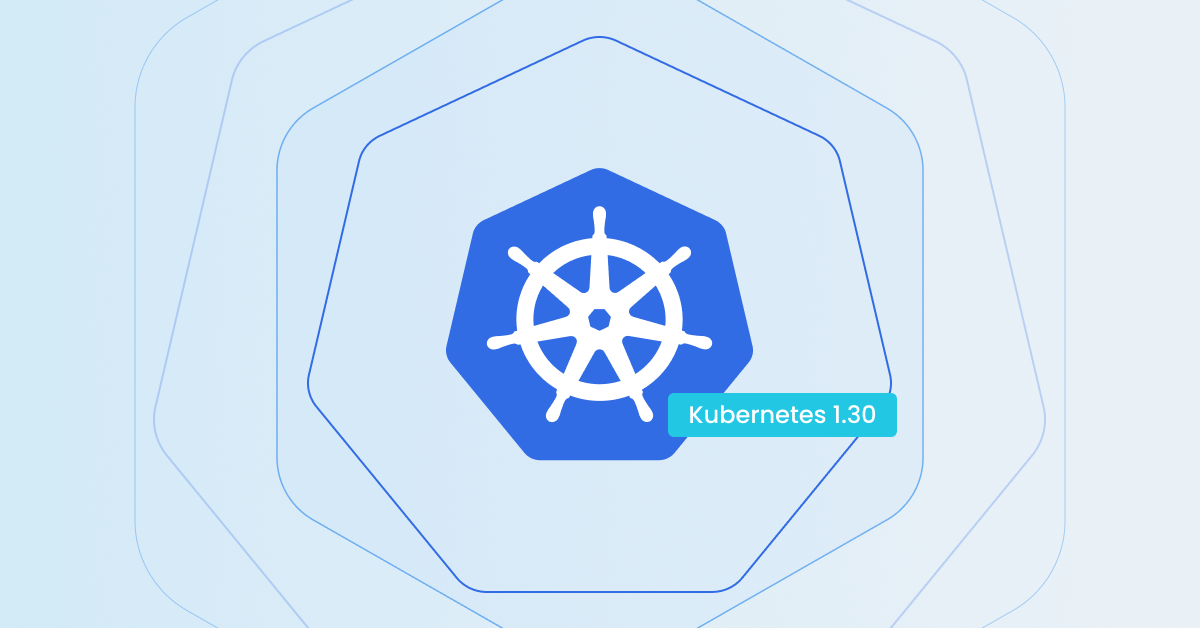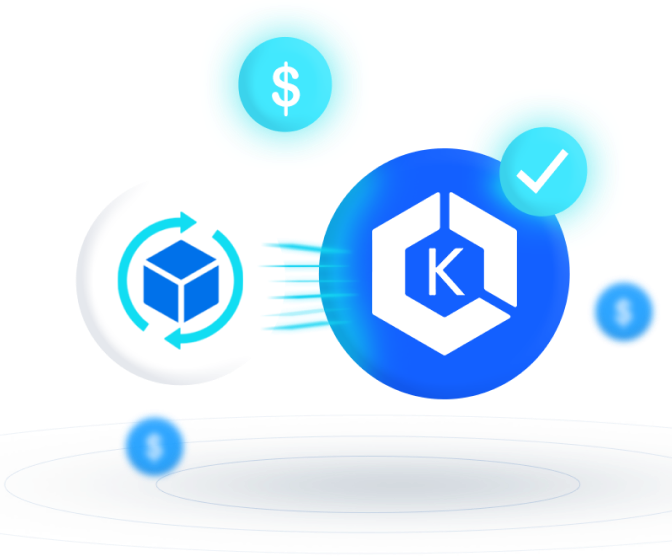Kubernetes 1.30, endearingly nicknamed Uwubernetes for being “the cutest release to date”, introduces a variety of new features and improvements designed to enhance usability, security, and performance across various components of the platform.
Key improvements include CLI enhancements that bolster security and operational flexibility, advanced instrumentation for refined debugging and monitoring, robust networking updates for improved service reliability, and significant node enhancements with support for swap memory and integrated security features like AppArmor.
Let’s dive into the most important updates and what they mean for your team.

Enhanced Security Features
Scheduler and Autoscaling Improvements
CLI Enhancements
Kubernetes 1.30 includes a significant improvement in the kubectl command-line interface. The addition of a custom profile in kubectl debug and subresource support in kubectl commands allows users to customize debug sessions and efficiently manage Kubernetes resources. This upgrade improves the operational security and flexibility for developers and system administrators.
The Kubernetes command line, `kubectl`, also sees notable enhancements, including a new `–custom` flag in `kubectl debug` for customizing debug resources and a new interactive flag in `kubectl delete` to prevent accidental deletions of critical resources.
API and Instrumentation Advances
The API Server now includes enhanced tracing capabilities using OpenTelemetry libraries to facilitate easier debugging through comprehensive insight into requests and context propagation. Metric cardinality enforcement and contextual logging also graduate to more stable phases, offering more control and preventing issues like memory leaks due to unbounded metric dimensions.
The release improves monitoring and debugging capabilities through API server tracing and metric cardinality enforcement. The use of Open Telemetry for API server tracing improves visibility and understanding of the system’s internal state, for more effective troubleshooting and optimization.
Networking Improvements
Enhancements in the networking components focus on reliability and performance. Changes such as the removal of transient node predicates aim to maintain service connectivity and stability while reducing the unnecessary load on cloud providers’ APIs, ensuring smoother operations during node readiness changes and terminations.
Node Enhancements
Node-level upgrades include support for memory swap on Linux nodes and the integration of AppArmor for enhanced security. These features allow for better performance management under diverse load conditions and improve security measures for containerized applications running in multi-tenant environments.
Kubernetes 1.30 updates for cost efficiency
Cloud optimization is top of mind for most organizations. Here at nOps, where we manage $1.5 billion in cloud spend, we’ve found that cloud waste comprises 30-50% or more for many organizations.
Let’s talk about the Kubernetes updates with the biggest impact on cost efficiency.
Enhanced Scheduler Performance
Kubernetes 1.30 significantly enhances the scheduler’s capability to handle larger clusters and more complex pod placement rules efficiently, which translates directly into cost savings. By reducing scheduling latency and optimizing resource allocation, it minimizes wasteful allocation of resources.
This efficiency is crucial for scaling operations, ensuring optimal resource utilization without over-provisioning, a common source of unnecessary expenditure. The improved scheduler supports autoscaling solutions by making more informed decisions about pod placement based on current resource usage and available capacity, which helps in reducing costs associated with underutilized nodes.
The scheduler in Kubernetes is responsible for placing pods onto suitable nodes within the cluster. Kubernetes 1.30 scheduler optimizations enable it to handle larger clusters and more complex pod placement rules more efficiently. This is particularly important for administrators who manage large or high-density clusters as it reduces latency in scheduling decisions and improves the overall resource utilization. These enhancements make the scheduler more capable of dealing with diverse workloads and varied infrastructural demands, which is critical for organizations scaling their operations.
Improvements to Horizontal Pod Autoscaler (HPA)
The Horizontal Pod Autoscaler (HPA) automatically adjusts the number of pod replicas in a Kubernetes cluster based on observed CPU utilization or other select metrics provided by custom metrics support.
In version 1.30, the HPA has been enhanced to better support application scaling using more sophisticated metrics. This allows for more nuanced scaling strategies that can dynamically respond to changes in workload demand. These improvements are vital for DevOps professionals and application developers who need to ensure that their applications maintain optimal performance and resource efficiency under varying load conditions.
The advancements in the HPA include better prediction models and more intelligent analysis of metrics, which help in making more accurate scaling decisions. This not only helps maintain performance but also helps optimize the costs associated with resource usage.
The HPA enhancements in Kubernetes 1.30 include the ability to utilize sophisticated metrics for scaling decisions. This capability allows the HPA to more accurately match resource allocation to actual demand, avoiding both under-scaling (which can lead to poor performance) and over-scaling (which can lead to wasted resources). From a cost perspective, this means that resources are scaled dynamically and efficiently, more closely aligning cost with need.
Impact on Autoscaling Solutions like Karpenter and Cluster Autoscaler
Karpenter and Cluster Autoscaler are designed to adjust the number of nodes in a cluster based on demand. The improvements in Kubernetes 1.30 directly benefit these tools by providing them with more accurate data about pod resource requirements and current usage statistics. This allows for more precise node provisioning and further optimizes pod placement:
Karpenter benefits from the enhanced scheduler as it aims to quickly provision the right type and number of nodes required by the workload. The scheduler’s improved performance ensures that once nodes are provisioned, pods are efficiently placed, maximizing the utilization of the provisioned resources.
The Ultimate Guide to Karpenter

Takeaways from version 1.30 of Kubernetes
Compared to previous versions of Kubernetes, version 1.30 provides more granular and intelligent scaling mechanisms. Prior versions relied heavily on more basic metrics which could result in less efficient resource usage and higher costs due to delayed scaling actions or less precise pod placement. The introduction of advanced metrics and improved algorithms in Kubernetes 1.30 allows for real-time, cost-effective scaling decisions, reducing the lag between demand surge and resource provisioning.
These enhancements not only improve the technical efficiency of Kubernetes clusters but also align closely with financial optimization strategies by reducing operational overheads and improving the ROI on infrastructure investments.
Collectively, Kubernetes 1.30’s updates advance Kubernetes’ robustness, making it more secure, scalable, and developer-friendly. The ongoing contributions from the community continue to drive the evolution of Kubernetes, reinforcing its position as a leading tool in container orchestration. For more detailed information, you can explore the official Kubernetes blog and its GitHub repository.
nOps + Kubernetes is even better
Are you already running on EKS and looking to automate your workloads at the lowest costs and highest reliability?
nOps Compute Copilot helps companies automatically optimize any compute-based workload. It intelligently provisions all of your compute, integrating with your AWS-native Karpenter or Cluster Autoscaler to automatically select the best blend of SP, RI and Spot. Here are a few of the benefits:
- Reduce Your AWS Cloud Costs: Engineered to consider the most diverse variety of instance families suited to your workload, Copilot continually moves your workloads onto the safest, most cost-effective instances available for easy and reliable Spot savings.
- 100% Commitment Utilization Guarantee: Compute Copilot works across your AWS infrastructure to fully utilize all of your commitments, and we provide credits for any unused commitments.
- No vendor-lock in. Just plug in your preferred AWS-native service (EC2 ASG, EC2 for Batch, EKS with Karpenter or Cluster Autoscaler…) to start saving effortlessly, and change your mind at any time.
- No Upfront Costs: You pay only a percentage of your realized savings, making adoption risk-free.
Our mission is to make it faster and easier for engineers to optimize, so they can focus on building and innovating.
nOps manages over $1.5 billion in AWS spend and was recently ranked #1 in G2’s cloud cost management category. Book a demo to find out how to save in just 10 minutes.




